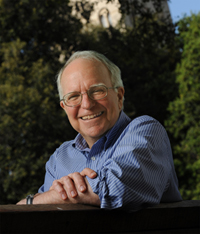The Brookings Institution is committed to quality, independence, and impact.
We are supported by a diverse array of funders. In line with our values and policies, each Brookings publication represents the sole views of its author(s).

Research
BPEA | Fall 2009
Fall 2009
During World War II and the Korean War, real GDP grew by
about half the increase in government purchases. With allowance for other
factors holding back GDP growth during those wars, the multiplier linking
government purchases to GDP may be in the range of 0.7 to 1.0, a range generally
supported by research based on vector autoregressions that control for
other determinants, but higher values are not ruled out. New Keynesian macroeconomic
models yield multipliers in that range as well. Neoclassical models
produce much lower multipliers, because they predict that consumption falls
when government purchases rise. Models that deliver higher multipliers feature
a decline in the markup ratio of price over cost when output rises, and an elastic
response of employment to increased demand. These characteristics are complementary
to another Keynesian feature, the linkage of consumption to current
income. The GDP multiplier is higher—perhaps around 1.7—when the
nominal interest rate is at its lower bound of zero.